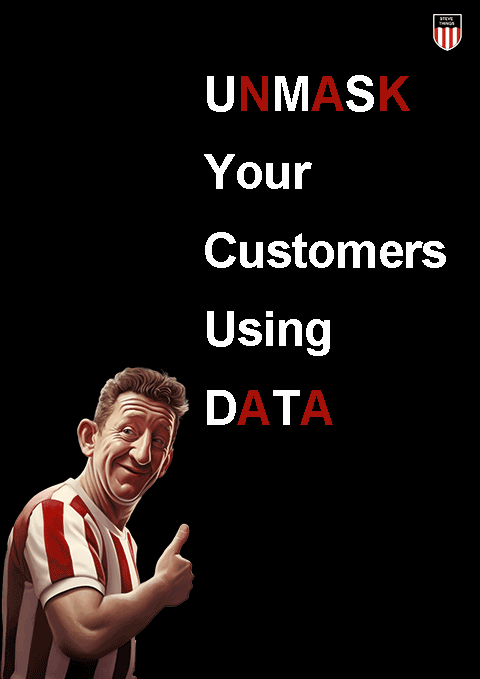As businesses grow, so does their customer data. Keeping track of customer information can be difficult if you don’t have the right platform to manage it. Integrating your Customer Data Platform (CDP) with your Martech Stack is a great way to ensure that all your customer data is connected and organised.
I’ll start by looking at what CDPs are and how they work with Martech Stacks. I’ll then move on to discuss how customers benefit from a properly integrated stack. Finally, we’ll look at some of the top tools and strategies you should use when integrating your CDP with your Martech Stack. By the end of this article, you’ll have a much better understanding of how to make sure all of your customer data is connected and organised in one unified system.
So, let’s dive in!
Benefits Of Integrating A CDP
Integrating a Customer Data Platform (CDP) with your Martech stack can provide immense value to the success of your organisation. CDPs are designed to collect, store, and activate customer data across all marketing channels in one centralised platform. By unifying all customer data into one place, you can gain a better understanding of customer behavior and preferences, allowing you to create targeted campaigns that drive growth.
The benefits of integrating a CDP into your Martech stack extend beyond just customer insights. It can also help streamline processes by automating manual tasks such as segmentation and marketing campaign management. This allows marketers to quickly launch campaigns without requiring extensive IT resources or manual effort. Additionally, integrating a CDP with other marketing technologies can help optimise performance by providing real-time insights that allow you to adjust strategies on the fly.
In addition to improving efficiency and performance, integrating a CDP with other marketing technologies also enables marketers to build more effective personalisation strategies. By combining customer data from multiple sources and managing it in one central location, marketers can create personalized experiences for their customers at scale. As such, integrating a CDP should be an important consideration when evaluating any new Martech investments. Integrating these tools will not only improve the effectiveness of existing marketing initiatives but also open up new opportunities for growth and innovation.
Understanding Your Martech Stack
Before you can start integrating a CDP with your Martech stack, it's important to understand the components of your existing stack and how they work together. Your Martech stack should include tools for collecting, managing, and analysing customer data, as well as creating personalised campaigns and experiences.
You also need to consider whether any additional technologies need to be added or customised in order to achieve your desired results.
To get started, take an inventory of all the technologies included in your current stack and assess how they interact with each other. Here are a few key points to consider:
• How easy is it for data to flow between different sources within the stack? • Are there any gaps or redundancies in data collection? • Do any technologies need to be upgraded or replaced? • What level of automation is needed in order to optimise processes?
Once you have an understanding of how your current Martech stack works together, you can begin looking at which CDP solutions make sense for your organisation. Consider both the technical capabilities of the CDP as well as its ability to integrate seamlessly with other marketing technologies. By taking the time to evaluate these options, you can ensure that you select a solution that will provide the most value for your business.

Preparing Your Data For Integration
Now that you have a better understanding of what's included in your existing Martech stack, it’s time to prepare your data for integration with a CDP. To do this, you'll need to ensure that all the data is formatted correctly and that any duplicate or missing pieces are addressed. Additionally, you should consider which types of data will be most valuable for the CDP to collect and store. This could include user profiles, customer behaviour, purchase history, and preferences.
To get started, here are four key steps to take when preparing your data for integration: • Establish a single source of truth for all customer data. • Identify areas where personalisation is needed and create segments accordingly. • Clean up any outdated or incorrect information in the database. • Analyse historical data sets to gain insights into customer behaviour.
These steps will help make sure that your CDP integration process goes as smoothly as possible. By taking the time to clean up and organise your data beforehand, you can ensure that you're getting the most out of the CDP technology and making it easier for marketers to target customers with personalized campaigns and experiences.
Connecting Your Platforms
With your data ready, it's time to connect your CDP to the rest of your Martech stack. By doing this, you'll be able to access and utilise the customer data collected in the CDP across all of the other tools in your stack. This will help ensure that customer profiles are up-to-date and that marketers can use the insights gained from CDP analytics to personalise their campaigns.
To get started, you'll need to decide which platforms need to be connected. This could include email marketing tools (Mailchimp, Campaign Monitor, Active Campaign), CRMs (such as Hubspot, SalesForce or Pipedrive), or even advertising platforms like Facebook and Google.
Once this is decided, you'll need to set up the integration process for each platform. This involves mapping fields between the two systems so that customer data is properly transferred between them.
Integrating your CDP with your existing Martech stack has many benefits. It will enable marketers to quickly access customer insights from a single source and use those insights to create relevant, personalised experiences for customers across multiple channels.
For instance when a customer identifies himself by purchasing a product via email the CDP can capture this information and feed it to the centralised data warehouse. This means it can then be fed back to customer service teams from the CDP (so they have purchase history and can better answer questions), to the website for personalisation purposes (if the product segment makes sense to do so) and to the CRM to the marketing teams can also develop persona's and lookalike audiences.
Optimising Your Combined System
Once your CDP and Martech stack are connected, you can begin to optimise the combined system. This will help you get the most out of your data and ensure that you're leveraging customer insights for maximum impact.
For example, if a customer has recently purchased a product on your website or interacted with an email campaign, then use those insights to target them with relevant content across other channels such as social media or display ads. This will help create personalised customer experiences that drive engagement and loyalty.
Get the most from your marketing
Integrating your customer data platform with your martech stack can help you get the most out of your marketing efforts. With a streamlined set of systems, you'll be able to better understand customer behaviour and target them more accurately. The process isn't always easy, but with the right preparation and strategies, you can make sure that your combination of technologies provides maximum value for both you and your customers.
- Understand how your martech stack works so that you can properly prepare for integration.
- Then, connecting the two platforms should be done in a way that optimises the system.
- Finally, ongoing monitoring and optimisation are key to ensuring that everything is working together correctly.
Overall, integrating a CDP into your martech stack can provide tremendous benefits if done correctly. It requires a bit of effort upfront, but the rewards are worth it in terms of improved customer experiences and higher ROI from marketing campaigns. With these best practices and strategies in mind, you'll be ready to take advantage of the power of integrating a CDP into your martech stack.

